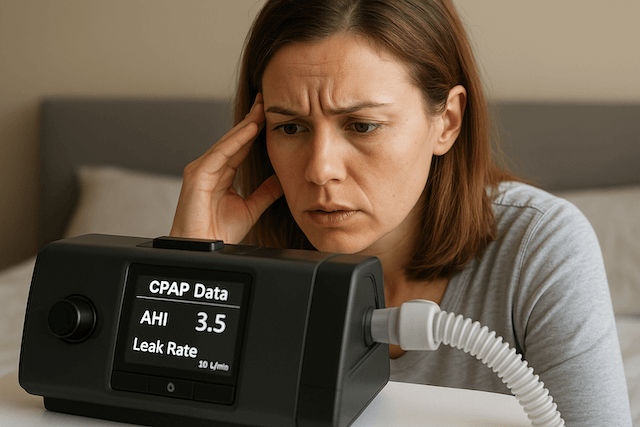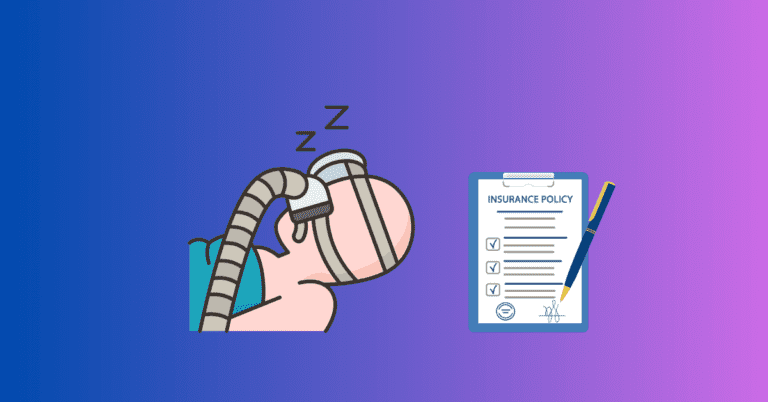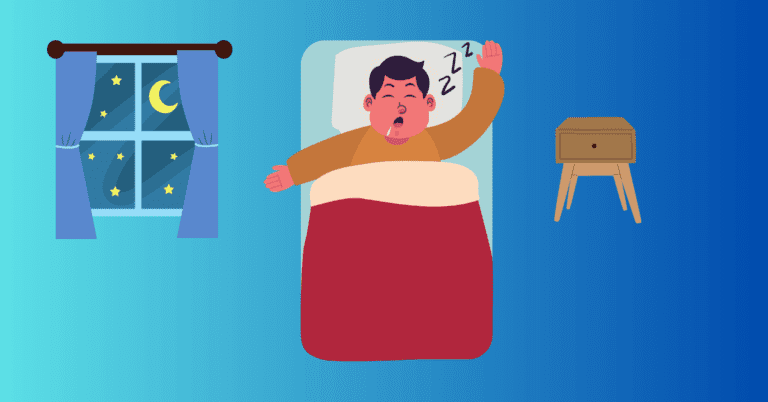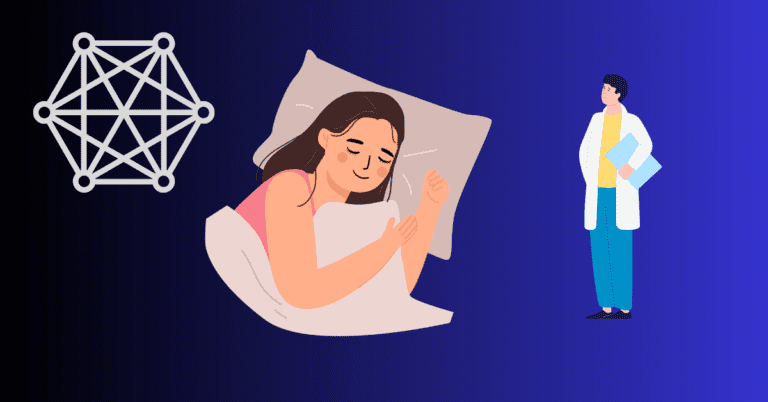Obstructive Sleep Apnea: Diagnosis and CPAP Changed My Life
If you’ve ever woken up feeling like you’ve been hit by a truck—head pounding, mind foggy, and body begging for more rest—then there is good chance you might have obstructive sleep apnea (OSA)
For years, I battled severe migraines and a constant brain fog that made me feel like I was walking through quicksand. It wasn’t until I got diagnosed with OSA and started using a CPAP mask that everything changed.
Today, I want to share my story and break down what obstructive sleep apnea is, its symptoms, its causes, and how it might be affecting you more than you realize.
Obstructive Sleep Apnea (OSA) is more than just snoring. It’s a serious condition that affects millions of people, including myself.
There is also new reasearch that links sleep apnea directly with a lack of testostorone and erectile dysfunction, so if you’re a male this should be a good enough reason to get yourself tested asap.

My Wake-Up Call: Living with Undiagnosed OSA
Let me take you back to before my diagnosis. I’m Jeremy, and like a lot of folks, I didn’t think much about my sleep.
Sure, I snored—my wife would nudge me awake sometimes—but I figured that was just part of being a guy in my 40s. What I couldn’t ignore, though, were the mornings. I’d wake up with these crippling migraines, the kind that felt like someone was drilling into my skull.
I’d pop painkillers, down coffee, and still spend the day in a fog, barely able to focus on work or enjoy time with my family. I thought it was stress, or maybe I wasn’t drinking enough water. Turns out, it was something much bigger.
Before I was diagnosed, I had no idea that the constant exhaustion I felt was because my body was fighting for air while I slept.
Getting diagnosed with OSA and starting CPAP therapy didn’t just improve my nights—it transformed my days too.
What Is Obstructive Sleep Apnea?
Obstructive Sleep Apnea (OSA) is a sleep disorder where your airway becomes blocked repeatedly during sleep, causing you to stop breathing momentarily.
This blockage happens because the muscles in the back of your throat relax too much, collapsing the airway and preventing air from flowing freely.
The result is a cycle of interrupted breathing, which leads to poor sleep quality and a host of other health problems if left untreated.
In my case, I didn’t recognize the signs at first. I just thought I was tired because of work or stress. But after experiencing severe daytime fatigue, loud snoring (which my wife wasn’t too happy about), and waking up gasping for air, I knew something wasn’t right.
It was getting worse now. I was getting migraines that would knock me out for a whole day.
That’s when I went to the doctor, and they recommended a sleep study—a decision that changed everything.
Symptoms of Obstructive Sleep Apnea
Obstructive Sleep Apnea comes with several telltale signs, some of which you may not even notice yourself.

For me, the most obvious symptom was loud snoring, but here are some other common indicators:
- Loud, chronic snoring (which was definitely the case for me)
- Gasping or choking during sleep
- Waking up frequently throughout the night
- Unexplained daytime fatigue
- Morning headaches
- Difficulty concentrating
- Migraines
One of the strangest things I experienced was waking up multiple times each night without knowing why. I never realized I was gasping for air or that my breathing was stopping.
It was only after my sleep study results came in that I fully understood the impact OSA was having on my body.
I was shocked that I was diagnosed with very severe obstructive sleep apnea. But I was also happy that I had answers.
Causes and Risk Factors of Obstructive Sleep Apnea
While OSA can affect anyone, certain factors increase your risk. These include:
- Excess weight: Being overweight or obese increases the pressure on your airway, making it more likely to collapse during sleep.
- Neck circumference: A thicker neck can narrow the airway, making it more prone to blockages.
- Aging: As we age, our throat muscles tend to relax more, increasing the likelihood of airway collapse.
- Gender: Men are more likely than women to develop OSA, although women’s risk increases after menopause.
- Family history: OSA often runs in families, so genetics can play a role.
In my case, I ticked a few of these boxes, particularly excess weight and a large neck. However, I had no family history of sleep disorders.
Once I started piecing these clues together, I knew I had to get checked out.
How a Sleep Study Diagnosed My Obstructive Sleep Apnea
A sleep study (polysomnography) is the gold standard for diagnosing obstructive sleep apnea.
During the study, various aspects of your sleep are monitored, including brain activity, breathing patterns, heart rate, and oxygen levels.
The results from my sleep study were eye-opening.
My Apnea-Hypopnea Index (AHI) was extremely high, meaning I was having dozens of interruptions per hour, nearly 1 every minute where my airway was either partially or completely blocked.
That diagnosis was a game-changer. For the first time, I had a clear explanation for why I felt so tired all the time.
More importantly, I had a path forward to turning my life around.
CPAP Therapy: The Game-Changer in Treating Obstructive Sleep Apnea
After my diagnosis, my doctor prescribed CPAP therapy—which stands for Continuous Positive Airway Pressure.
This treatment involves wearing a mask over your nose (or mouth and nose) that delivers a steady stream of air pressure to keep your airway open during sleep.
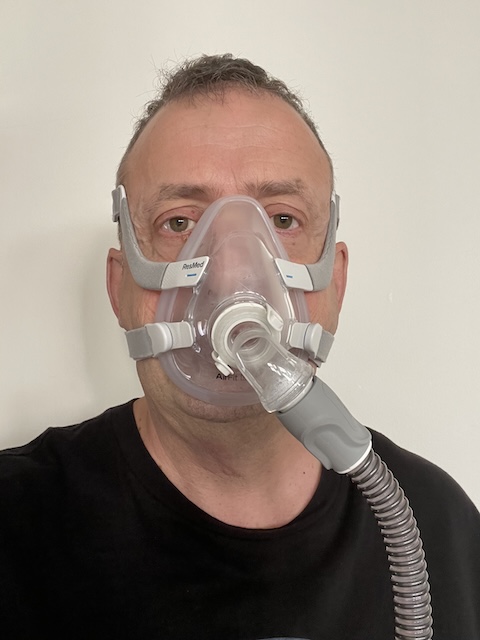
At first, I was a bit hesitant about the idea of wearing a mask to bed every night.
It felt uncomfortable at first, and I wondered if I’d ever get used to it. It reminded me of those face huggers in the Aliens movies.
But the truth is, the benefits far outweighed the initial discomfort. Within just a few nights of using the CPAP machine, I noticed a dramatic improvement in my energy levels.
And guess what? My migraines disappeared overnight 🙂
Benefits of CPAP Therapy for Obstructive Sleep Apnea
CPAP therapy is considered the most effective treatment for moderate to severe OSA, and for good reason. Some of the benefits I experienced include:
- Improved sleep quality: I no longer woke up gasping for air or feeling unrested.
- Increased daytime energy: My daytime fatigue virtually disappeared. I started waking up feeling refreshed, something I hadn’t experienced in years.
- Better focus and concentration: My mental clarity improved dramatically. I used to struggle with brain fog, but CPAP helped me feel sharper throughout the day.
- Reduced snoring: This one was a big deal for my partner—CPAP therapy pretty much eliminated my snoring.
CPAP literally turned my life around. I went from feeling like I was sleepwalking through my days to finally feeling like I had the energy to live fully.
The transformation was so significant that I can’t imagine life without my CPAP machine now.
Other Treatment Options for Obstructive Sleep Apnea
While CPAP therapy is the most common treatment, it’s not the only option for managing OSA. Some other treatments include:
- Oral Appliances: These devices reposition the jaw and tongue to keep the airway open during sleep. They’re usually prescribed for people with mild to moderate OSA.
- Surgery: In some cases, surgery may be recommended to remove tissue from the airway or adjust the jaw to prevent blockages.
- Lifestyle changes: Losing weight, avoiding alcohol before bedtime, and sleeping on your side can all help reduce the severity of OSA symptoms.
My doctor discussed these options with me, but given the severity of my OSA, CPAP therapy was the clear choice.
Living with Obstructive Sleep Apnea: The Long-Term Outlook
Living with OSA can be challenging, but the right diagnosis and treatment make all the difference.
For me, CPAP therapy has been life-changing. I went from feeling constantly tired and foggy to waking up refreshed and energized every day.
The most important thing I’ve learned is that addressing sleep apnea isn’t just about improving your sleep—it’s about improving your overall health.
Untreated OSA can lead to serious complications like high blood pressure, heart disease, stroke, and diabetes.
That’s why it’s so important to get diagnosed and treated as early as possible.
Conclusion: Don’t Ignore the Signs of Obstructive Sleep Apnea
If you’re experiencing symptoms like loud snoring, excessive daytime fatigue, or waking up gasping for air, don’t ignore them.
Obstructive sleep apnea is a serious condition that can have far-reaching consequences for your health.
But with the right diagnosis and treatment—whether through CPAP therapy or another method—you can reclaim your nights and improve your quality of life, just like I did.
Living with OSA doesn’t have to define you. The key is taking action and seeking help. Trust me, your future self will thank you for it.
Do you have any questions or experiences you would like to share? If so, please comment in the section below.

